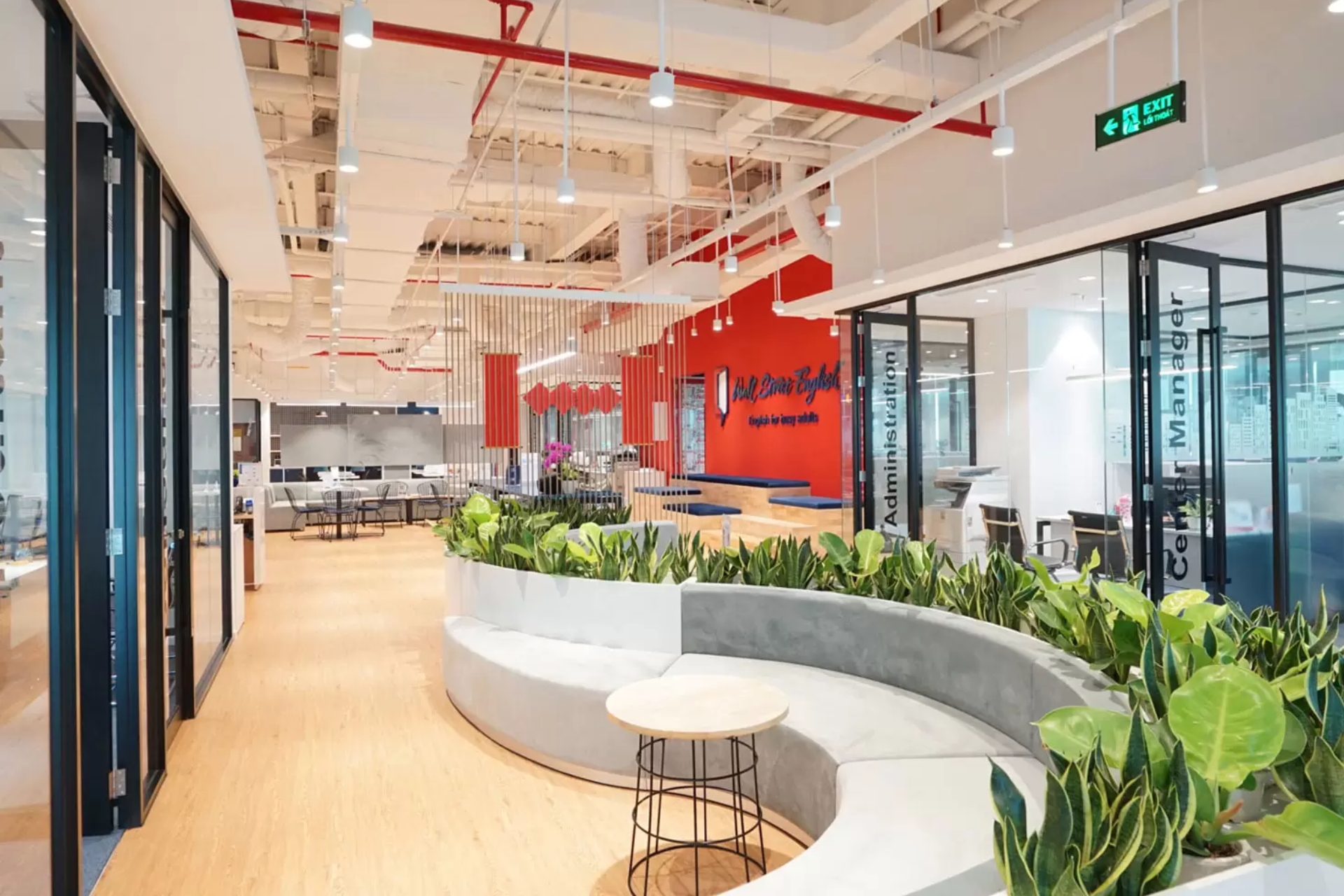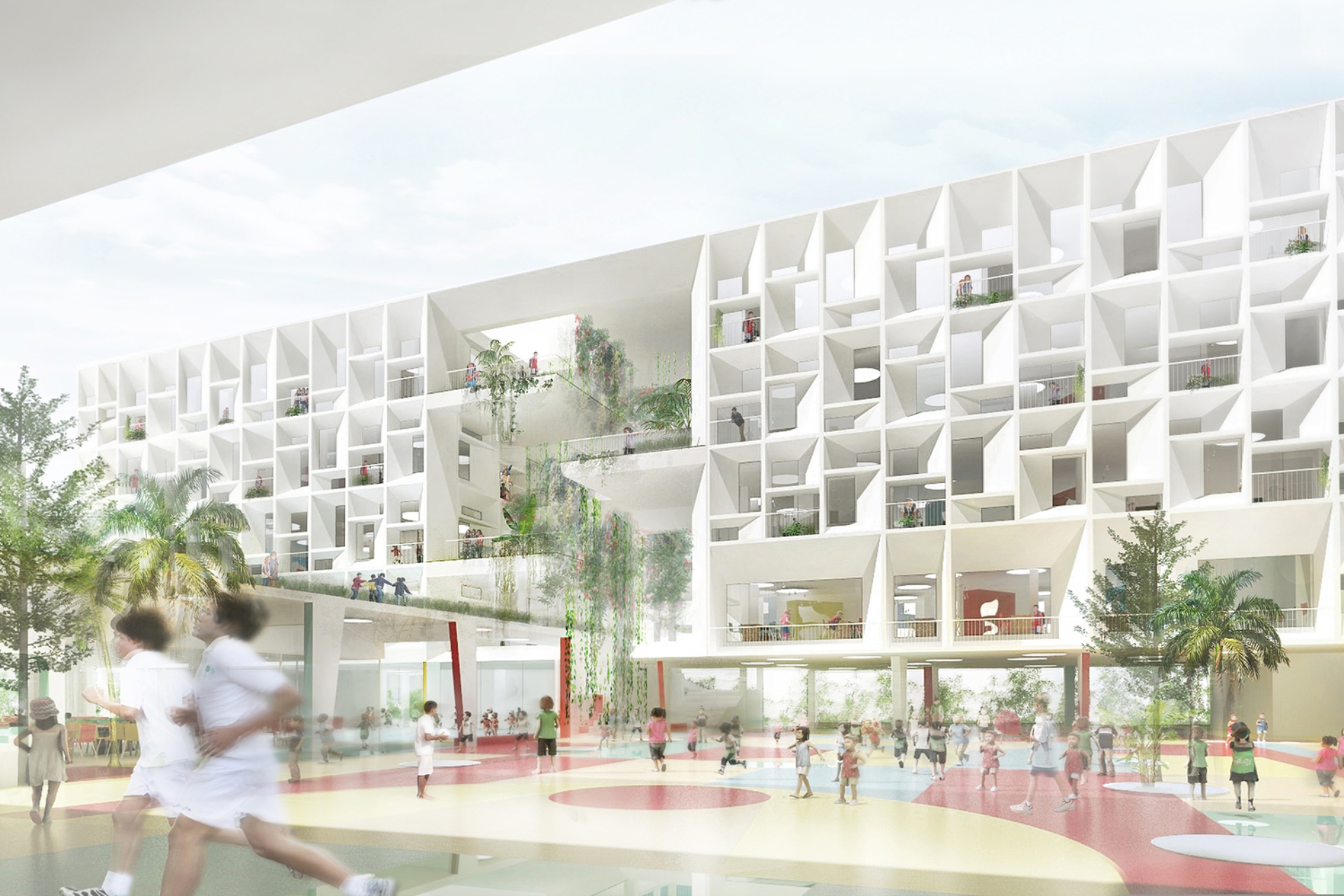
The A–Z Process of Designing and Constructing International Schools
Designing and constructing an international school is a long journey that requires synchronized coordination between architecture, engineering, safety, operations, and educational philosophy.
An international-standard school is not only beautiful in form, but also must create a healthy, inspiring learning environment and operate efficiently for a long period of time. Below is the A–Z process at TECO that investors can refer to when researching and exploring the design – construction of an international school.
Phase 1: Survey & demand analysis
The first phase focuses on thoroughly understanding the land plot, operational needs, and development orientation of the school. This is the foundation step for ensuring all upcoming design and construction decisions become accurate and cost-efficient.
Main tasks include:
-
Surveying the existing land conditions: area, boundaries, sun–wind orientation, geological conditions.
-
Assessing location and zoning: construction density, traffic system, street lines, legal regulations.
-
Studying educational models: IB, Cambridge, STEAM… because each model requires different types of spaces.
-
Identifying usage needs: number of students by grade level, standard classrooms, functional rooms, labs, library, sports hall, common areas.
-
Budget analysis: to determine investment scale, priority order, and material standards.
A good survey phase helps investors avoid risks, optimize costs, and gain a clear data foundation for the entire international school project.
 Phase 1: Survey & demand analysis
Phase 1: Survey & demand analysis
Phase 2: Concept development & conceptual design
This is the phase that expresses the project’s identity. Architects will create the “soul” of the school through architectural style, spatial philosophy, and specialized learning experiences.
Implementation tasks include:
-
Building the design philosophy: modern, dynamic; green, sustainable; technology-oriented,…
-
Preliminary functional zoning: academic block, play – sports block, administration block, common areas – open spaces.
-
Shaping the architecture: interconnected spaces, abundant natural light, open views, optimized student circulation.
-
Preliminary 3D illustrations: helping investors visualize the overall space and provide early feedback.
The clearer the concept, the faster and more accurate the technical design and construction phases will be.
 Phase 2: Concept development & conceptual design
Phase 2: Concept development & conceptual design
Phase 3: Detailed technical design
This is the step that transforms ideas into complete technical drawings – the most essential foundation for standard construction. An international school requires systems that are far more complex and synchronized compared to typical residential buildings.
Design items include:
-
Architecture – structure – MEP – fire protection according to international standards and Vietnamese regulations.
-
Lighting, ventilation, and acoustic design:
-
Classrooms: uniform lighting, standard illuminance.
-
Library: good sound absorption, soft lighting.
-
Sports hall: large ventilation, impact safety.
-
-
Detailed 3D perspectives: sustainable materials, environmentally friendly, safe for children.
-
Interior design: desks, lockers, bookshelves, labs, library, art rooms, sports areas, running tracks, swimming pool.
-
Operational compatibility check: ensuring all spaces align with actual teaching – learning activities.
Good detailed design helps minimize changes during construction. This is a crucial factor ensuring the quality of an international school building.
 Phase 3: Detailed technical design
Phase 3: Detailed technical design
Phase 4: Construction & supervision
When all documents are complete, the construction team begins implementing the project. Due to the characteristics of an international school, technical systems and safety standards must be strictly supervised.
Key steps include:
-
Organizing the construction site: pathways, material storage, safety fences.
-
Construction stages: structural works – finishing works – interior installation – landscape construction.
-
Quality & progress supervision for each category.
-
Installing technical systems: electricity, water, internet, wide-coverage wifi, audio, cameras, fire protection, air filtration system…
-
Acceptance testing for each stage based on the international standards specified in the design documents.
A standardized construction process ensures durability, safety, and long-term usability for students.

Construction process at TECO
Phase 5: Handover – inspection – trial operation
This is the final quality evaluation phase before an international school goes into operation.
Key tasks:
-
Quality inspection following international-standard checklists (materials, technical systems, safety level).
-
Test run of all systems: fire protection, electricity – water, wifi – camera, air-conditioning – ventilation, sound – lighting.
-
Handover to the School Board: including as-built drawings, operation manual, periodic maintenance guidance.
-
Operation training: equipment usage, system management, safety procedures.
-
Warranty – fine tuning: troubleshooting and adjustments based on real feedback from teachers – students.
Conclusion
The A–Z design and construction process of an international school requires methodical planning, expertise, and deep understanding of education. When executed correctly, the school not only meets standards but also becomes an inspiring, safe, and sustainable learning environment.
With many years of experience in designing and building international schools through representative projects such as Emasi Plus Water Point and the Horizon International Bilingual School system, TECO understands the importance of creating learning spaces that inspire students.
On the continuous journey of creation, TECO is committed to delivering high-quality educational buildings. Contact us for detailed consultation for the educational project you are envisioning.



